On the day of a fallen firefighter’s memorial, the Jasper Wildfire Complex has been downgraded from “out of control” to “being held.”
On August 17, as the family and friends of Morgan Kitchen gathered to celebrate the life of the 24-year-old firefighter who died in the line of duty, a significant milestone in the fight against the 34,000 hectare Jasper Wildfire Complex was reached.
Parks Canada incident commander, Jonathon Large, described feeling conflicted about the progress that crews have made to be able to change the status of the wildfire which began 27 days ago.
“All of us here at the unified command team have mixed emotions…we thank all the responders involved in helping us achieve this milestone, while also recognizing the loss of Morgan Kitchen…who lost his life on August 3 while working to bring this blaze under control,” Large said.
“Being held,” means the fire is not expected to spread in any priority areas based on current and expected weather and resourcing.

On Friday, August 16, as crews demobilized sprinkler systems and members of various regional fire departments turned their trucks toward their homes, their jobs in Jasper having been completed, Jasperites who have been displaced from their community since July 22 had the opportunity to re-enter the townsite. Having met the Incident Management Team’s established re-entry criteria, IMT members opened the town’s east entrance so residents could get their first in-person look at the community, their homes and their places of business.
Through the Municipality of Jasper’s communications, Mayor Richard Ireland reminded residents that it’s okay to not be okay right now.
“Everyone has had, and will have, a different experience. As one community, we will walk this new road together, every step of the way. It will be long, it will be difficult: no one will be alone. We will rebuild, side by side, stronger than ever,” Ireland said.
While the town didn’t have hard numbers on how many people came back to the townsite on Friday, ATCO re-lit furnaces in more than 330 residences and the Municipality’s welcome centre at Commemoration Park received between 500 and 700 people, according to Christine Nadon, incident commander for the MOJ.
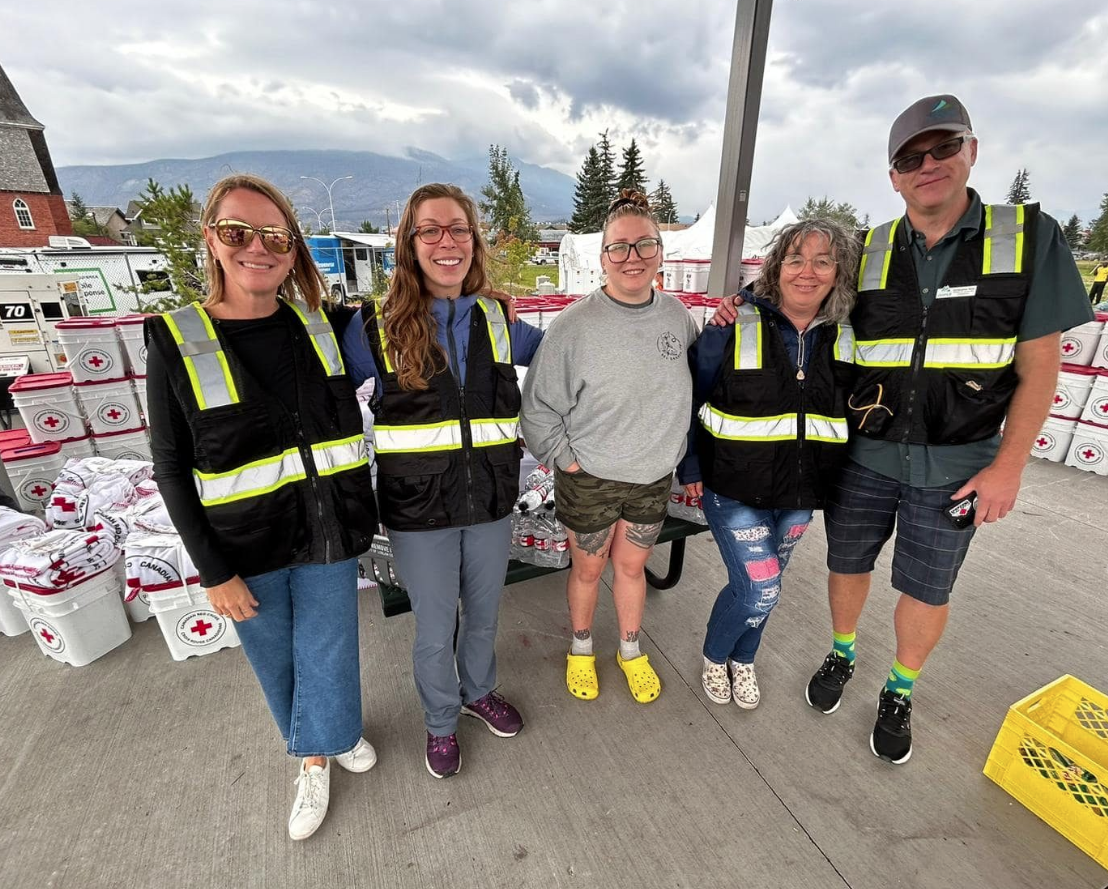
Jasperites poured their hearts out on social media as they came to terms with the havoc wreaked on their community. Communications staff at the MOJ said those who came to town were experiencing relief, grief, uncertainty, and everything in between.
“We saw neighbours helping neighbours, patience in the face of long waits, and a shared determination to move forward together,” the MOJ said.
In his update to the media, Large recapped the toxic marriage of environmental circumstances that contributed to the largest wildfire in Jasper National Park’s recorded history.
“A weeks-long heat dome leading up to the dry lightning storm created challenging firefighting conditions by drying out trees, grass and the atmosphere,” he said.
“The unimaginable pace and growth [of the fire] was set early on, and it’s a true testament to the commitment of the unified command team that the evacuation of visitors, staff and residents in town—and especially along the Icefields Parkway, where the wildfire charged at the heels of first responders—was completed safely.”
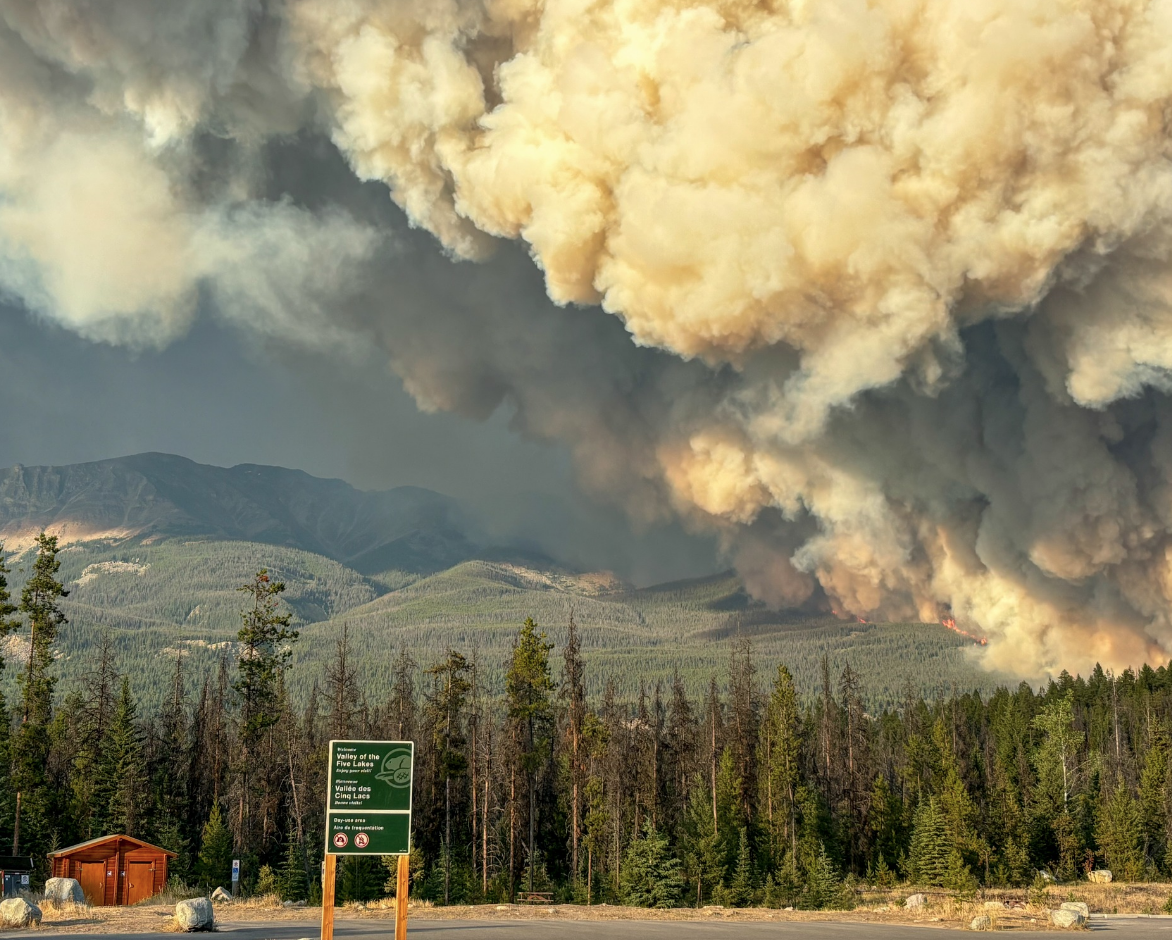
As the community reconciles with its immense losses, Large said his team wanted to help the public understand how challenging the wildfire was from day one.
On the afternoon of July 22, four wildfires were reported in quick succession, and the three fires south of town soon merged into one.
As the gravity of the situation became clear, hundreds of first responder personnel and legions of firefighting equipment were mustered within 24 hours, “including air tankers which did multiple retardant drops which the wildfire did not respond to,” Large said.
On July 24, winds picked up to more than 100 km/hr, driving flames beyond any possible predictions, Large said.
“These winds were so strong they lifted a 20-foot sea can weighing over 6,000 pounds from the Wabasso Campground and threw it into the Athabasca River, more than 100 metres away.”
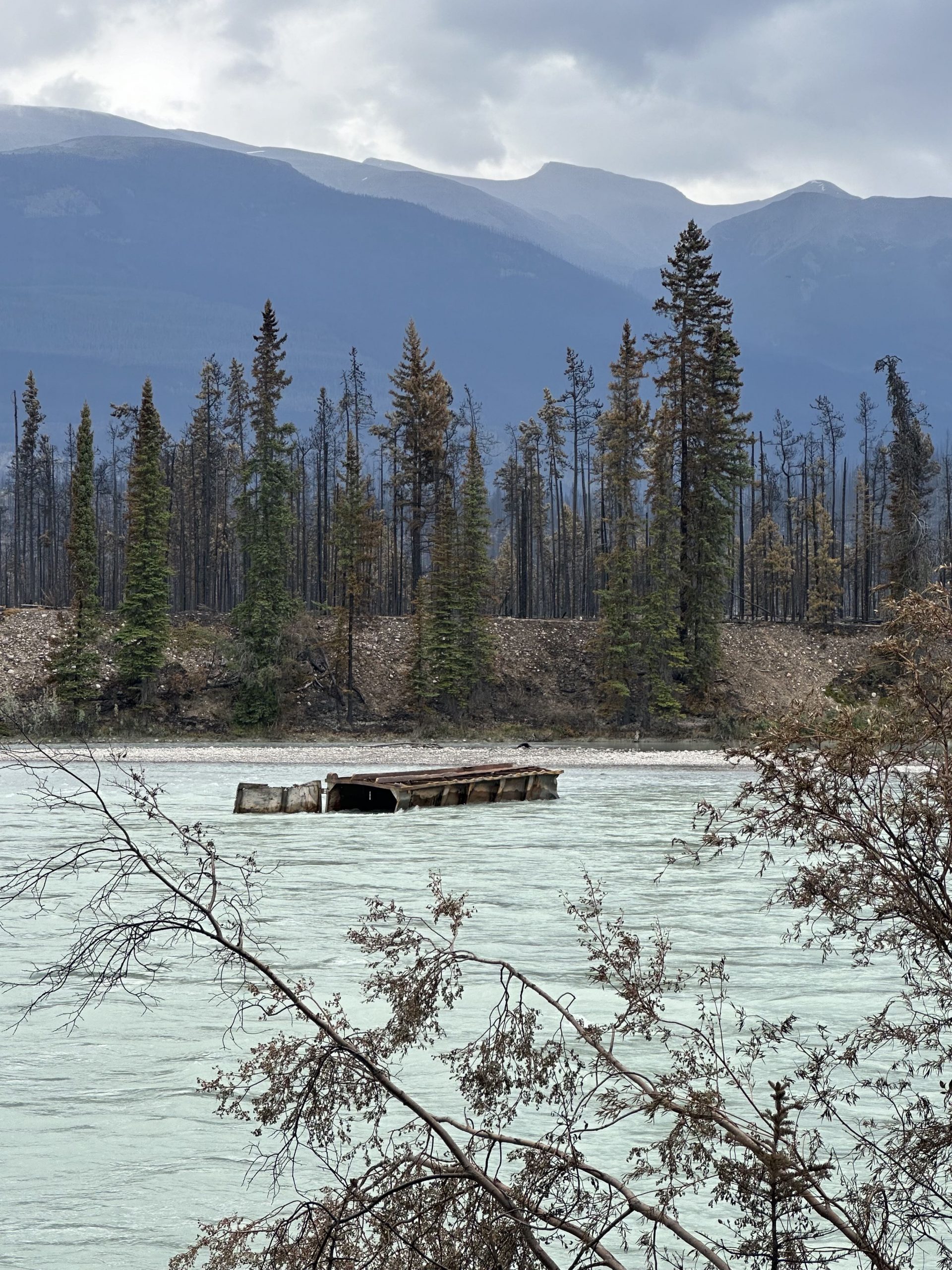
The fire impinged the townsite at about 6 p.m. By the time it had burned through town, more than 350 structures—mostly residences—were destroyed.
Nearly a month later, thanks to help from nearly 4mm of rain that fell in Jasper National Park on Friday, the fire that changed Jasper forever was classified as being held.
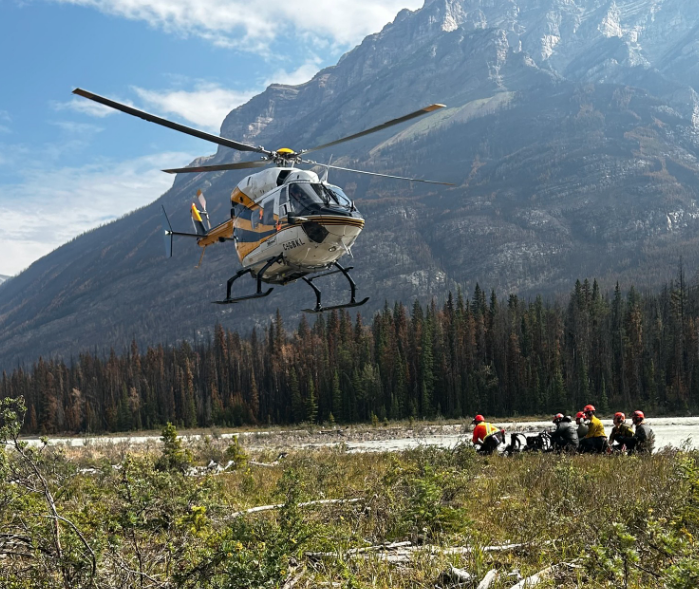
Firefighters made significant progress across priority areas, Large said, and hotspots that persisted on a fire near the Overlander Trail were being mopped up. On the other hand, hotspots on the Whistlers Bench, on the SkyTram Road, are in steep, slippery terrain, making ground access too dangerous.
Trees are being felled around key infrastructure in the park including campgrounds and trailheads. Geotechnical experts are on site on the Maligne Valley Road and the Icefields Parkway to assess slope stability above roadways. In the Maligne Valley on Friday, there was low visibility, frustrating helicopter access, so crews will begin accessing and assessing the area by ground.
Residents who are accessing and assessing the community in the coming days and weeks will have the Municipality’s Re-entry Guide to help them navigate the process.
The re-entry guide is a comprehensive handbook and provides a step-by-step process of returning home. Part of the suite of resources includes maps of the town which outline the status of utilities throughout the town. Residents whose homes are not identified in the map should report their information to the Jasper Re-Entry Support Centre at Commemoration Park, according to Nadon.
“Utility crews are working as quickly as possible to restore services,” she said.
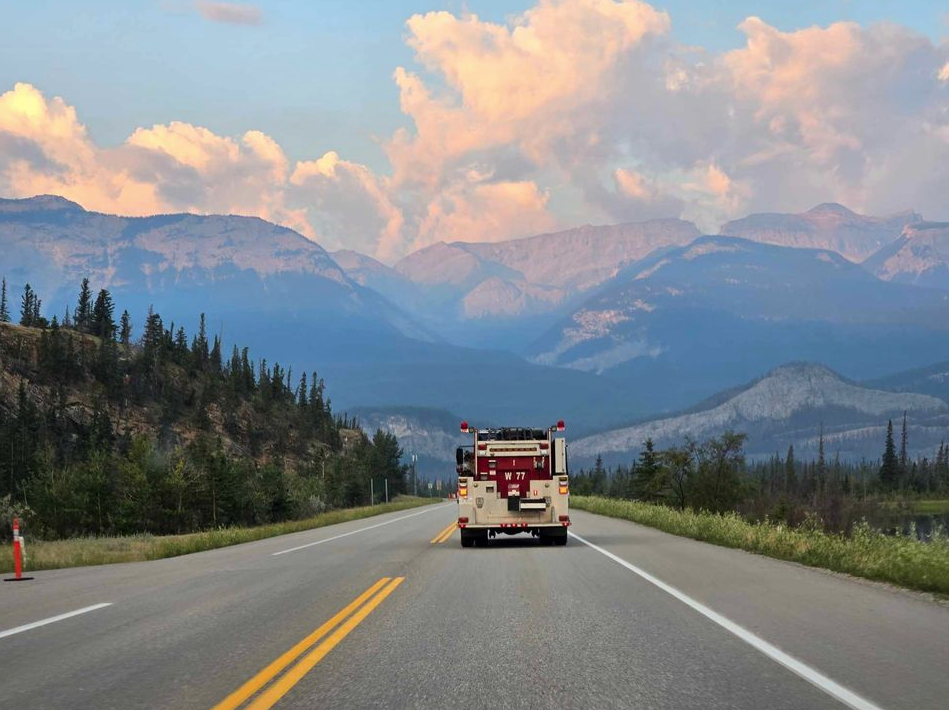
Residents in Jasper will notice structural protection equipment and resources being packed up. There are still more than 500 personnel working on the incident, but as crews “time-out,” incident commanders will manage fluctuating resources to ensure the right type of crews and equipment are being brought in to manage the downgraded fire, Large said.
“Progress has been very impressive,” he said. “Crews are doing a phenomenal job in very tough terrain and in tough conditions.”
Kitchen, the Alberta Wildfire crew member based out of Rocky Mountain House who passed away August 3, was one of those working in tough conditions. In a statement on social media, Jasper National Park said he answered the call to Jasper.
“This loss is felt deeply by Morgan’s family, friends, colleagues and the firefighting community. All of Parks Canada and Jasper honour Morgan and mourn with you. He will always be remembered.”
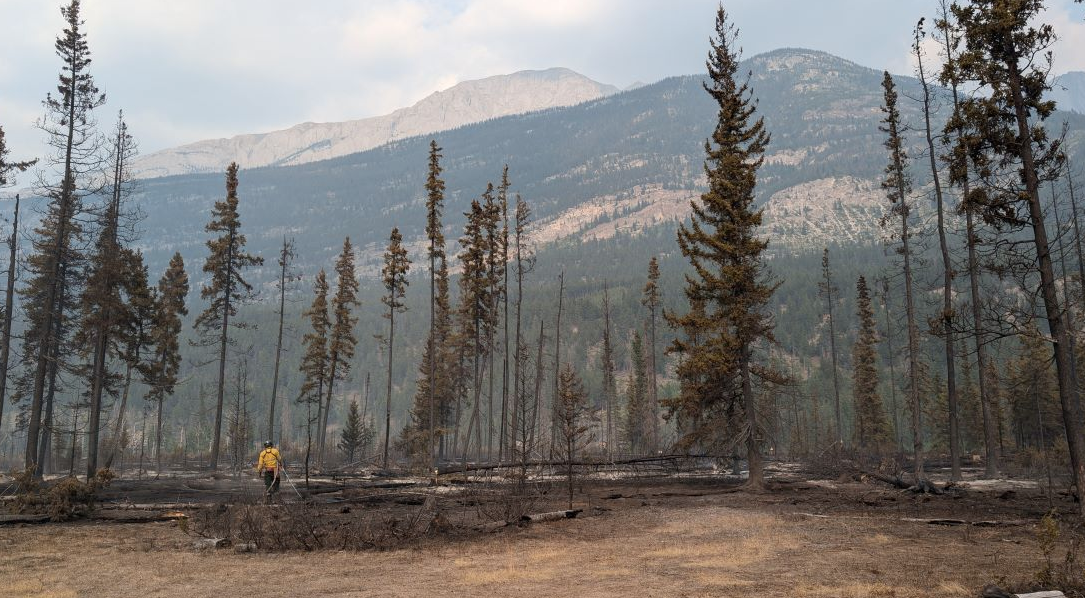
Bob Covey // bob@thejasperlocal.com


